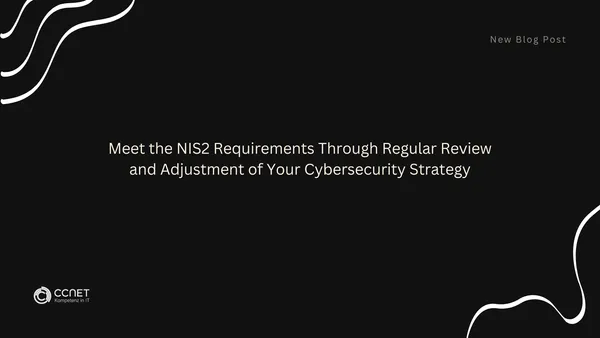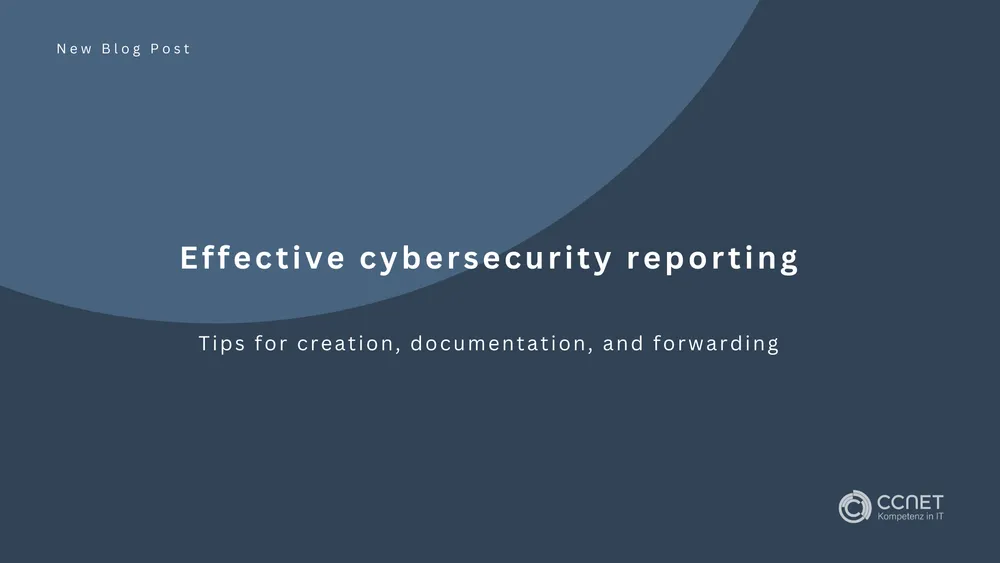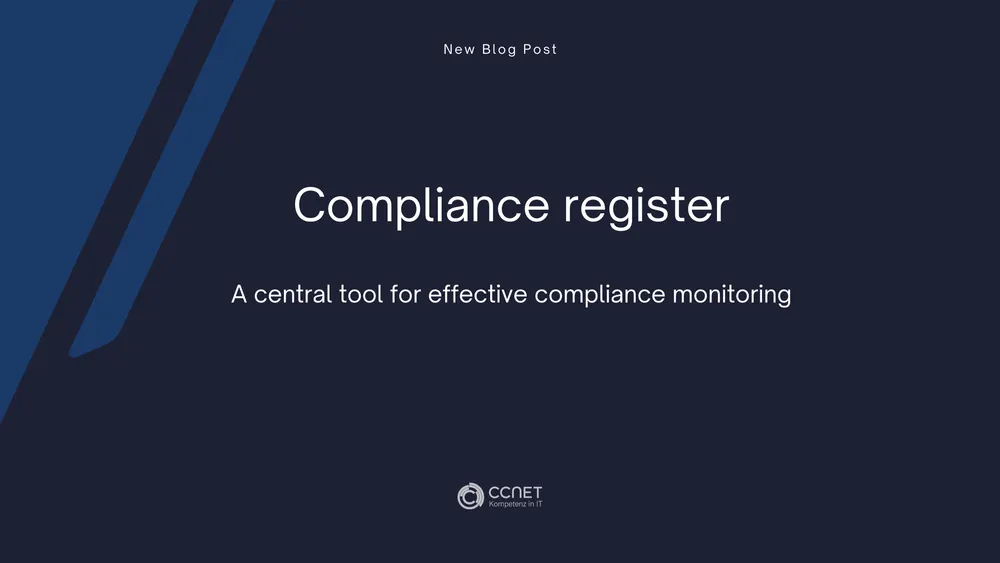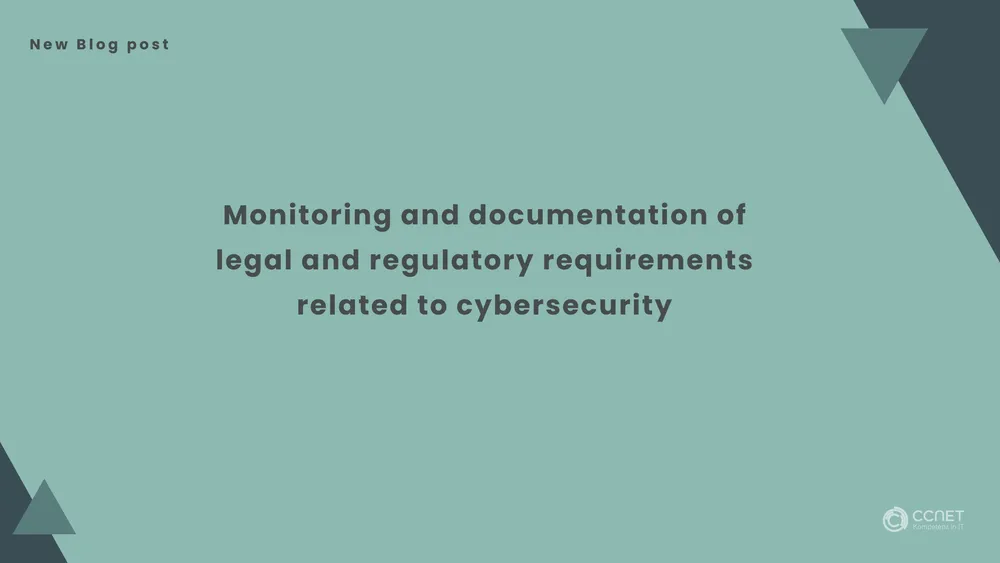
CCNet
Dec 2, 2024 • 4 min read

Meet the NIS2 Requirements Through Regular Review and Adjustment of Your Cybersecurity Strategy
Having a solid cybersecurity concept is crucial – but equally important is ensuring that the strategy is regularly reviewed, updated, and adapted to current threats and business requirements. The NIS2 Directive mandates that companies falling under its scope must systematically and continuously revise their cybersecurity strategies. A structured process for reviewing and updating the cybersecurity strategy is, therefore, not only key to compliance with legal requirements but also essential for protecting IT infrastructure and ensuring secure operations in the digital age.
What You Need: A Flexible, Continuously Improving Security Strategy
An effective process for reviewing and updating the cybersecurity strategy not only covers current threats but also dynamically adapts to changing threat landscapes, technological developments, and business requirements. It’s about not just reacting to risks, but proactively identifying new challenges and addressing them.
How to Implement It: The Process of Continuous Review and Improvement
Reviewing and updating your cybersecurity strategy is a clearly structured process that ensures all threats are identified, assessed, and efficiently addressed.
1. Initiating the Review: Schedule Regular Updates
The strategy should be reviewed quarterly – at set intervals such as March, June, September, and December. The IT security officer initiates this process at the beginning of each quarter to review current threats, changes in the business, and regulatory requirements. For example, a review cycle in March may uncover new vulnerabilities in the software being used, which need to be closed via patches or security configurations. In June, it might be necessary to adjust the IT infrastructure to meet new data protection requirements, while in September, measures to prevent social engineering attacks could be added based on the latest findings from security research.
Tip: In addition to regular reviews, it’s important to remain flexible in the face of significant changes in the threat landscape or the introduction of new technologies, and initiate unscheduled reviews when necessary.
2. Collecting and Analyzing Information: Data as the Basis for Decision-Making
The IT team systematically collects data on new threats, security incidents, and changes in the IT infrastructure. Current legal requirements are also considered to ensure that the strategy is always in line with regulatory demands.
Tip: Use monitoring systems and tools to detect suspicious activities in real time and take appropriate action. A detailed analysis helps make strategic decisions based on a well-founded basis.
3. Assessing and Identifying Changes: Recognizing the Need for Action
Once the data has been collected, the IT security officer works closely with management to assess the current risks. Potential vulnerabilities are identified, and necessary changes or additions are documented in a report.
Tip: This step is crucial for setting priorities. Use risk assessments and threat models to clearly identify which areas need urgent attention.
4. Approving Changes: Decision-Making and Authorization
Proposed changes to the strategy are submitted to management for approval. Once approved, a formal change management process is initiated to implement the adjustments.
Tip: A clear approval process helps to implement changes quickly and in a structured manner. Make sure that management always has a clear overview of the risks and necessary actions. It is also essential to thoroughly document all changes and decisions, as this is a central requirement for NIS2 compliance. Complete and transparent documentation not only ensures traceability of the measures taken but also protects the company in the event of an inspection by regulatory authorities.
5. Implementing Changes: Putting Actions into Practice
Once the changes have been approved, the IT team takes over the implementation. All affected employees and departments are informed about the changes, and targeted training measures are conducted if necessary.
Tip: Ensure that all affected employees are clear about their role in implementing the changes. This will make the implementation efficient and avoid delays. Additionally, each role and responsibility should be clearly documented to meet the requirements of NIS2 compliance. This documentation not only serves internal transparency but also ensures that the company can demonstrate during audits that all relevant processes and responsibilities have been properly defined and implemented.
6. Documentation and Archiving: Keeping Everything in View
Each change made to the cybersecurity strategy must be documented and archived in detail. An audit-proof documentation ensures that the process is traceable at all times.
Tip: A complete documentation not only facilitates internal processes but is also required in the event of audits or inspections by regulatory authorities.
7. Reporting: Transparent Communication Internally and Externally
A detailed report on the results of the quarterly review and the implemented changes is forwarded to management and relevant stakeholders. This report serves as a basis for strategic decisions and future improvements.
Tip: Use reports to create transparency about the security situation and to clearly show management the progress made and the actions planned for the future. Documentation, tracking, and handling change requests are essential components of NIS2 compliance. They not only allow you to continuously assess the security situation but also create a basis for proof in case of inspections by regulatory authorities. A complete log ensures that changes are traceable and can be reviewed at any time to guarantee legal compliance.
8. Continuous Improvement: Ongoing Process of Optimization
After implementation, the work is not done – the effectiveness of the entire process is regularly reviewed. The goal is to continuously make improvements to ensure that the strategy meets the highest standards and is always up-to-date.
Tip: Establish feedback loops to learn from past reviews and incidents. This will help you develop an ongoing, agile strategy that adapts to the evolving threat landscape.
Conclusion: Proactive Control Over the Cybersecurity Strategy
Quarterly reviews and continuous updates of the cybersecurity strategy ensure that your company is always optimally protected against cyber threats and complies with all the requirements of the NIS2 Directive. By structuring and regularly adjusting the measures, you maintain control over your cybersecurity and stay prepared for current developments.
Leverage the expertise of an IT security officer or an external compliance manager to ensure that your security strategy remains flexible and adaptable. This will help your company stay compliant with the law and proactively protect itself against future cyber threats.


